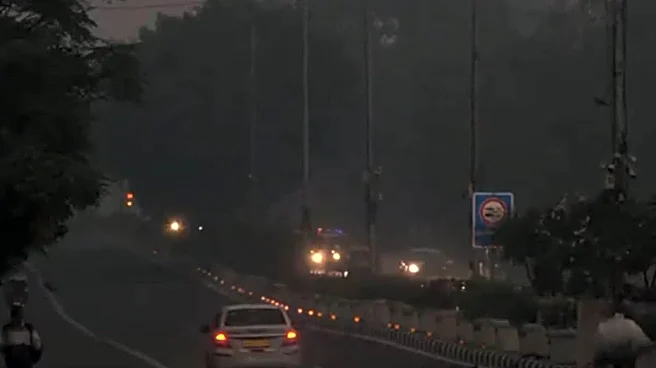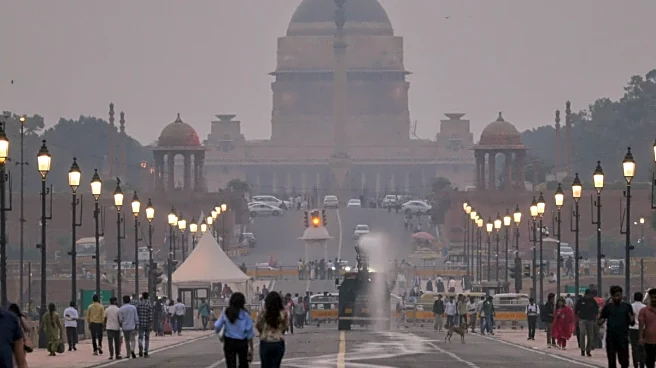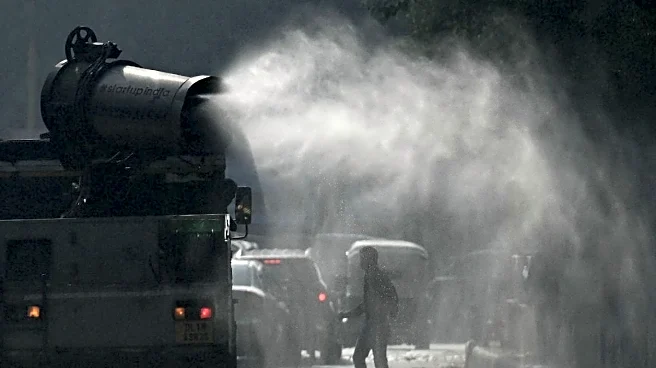Delhi continues to gasp under a thick layer of smog, with air quality dipping to “severe” levels across several parts of the city. Even as the government claims to be taking steps to control pollution,
allegations have surfaced that actual air quality readings are being underreported or manipulated. To verify the ground reality, CNN-News18 conducted an on-ground reality check across some of Delhi’s most polluted corridors — and the findings raise questions about the credibility of monitoring systems and the effectiveness of pollution control efforts.
Anand Vihar: AQI Over 400 Despite Water Sprinklers
At Anand Vihar, one of the city’s most polluted hotspots, the fixed Continuous Ambient Air Quality Monitoring Station (CAAQMS) displayed alarming numbers — AQI levels soaring beyond 400, even an hour after water sprinklers were used in the area to suppress dust.
A water tanker driver told CNN-News18, “We have been advised to do this after Diwali. We’ll be doing this throughout the winters now. More than 30–40 tankers are working every day.”
While dozens of tankers can be seen deployed across the city, spraying water on roads to settle dust, the impact appears short-lived. The readings from the CAAQMS continued to spike despite these measures, pointing to deeper systemic pollution sources — including heavy vehicular movement, industrial emissions, and construction dust.
At the nearby Anand Vihar bus depot, hundreds of buses enter and exit every hour, adding to the particulate load. Commuters said they’ve become desensitised to the crisis. “We just wear masks and go about our day,” one said.
ITO: Discrepancies in AQI Readings
Moving to ITO, another major traffic junction, CNN-News18 found a startling mismatch between AQI numbers displayed on different sources — the government’s monitoring board, its official app, and private AQI-tracking platforms.
Such inconsistencies raise concerns about the accuracy and transparency of air quality data being shared with the public. For those living or working in these areas, these discrepancies make it difficult to assess actual exposure levels.
Street vendors, daily wage labourers, and rickshaw pullers bear the worst brunt. Working outdoors for long hours, they have no option but to breathe toxic air every single day.
A local resident who has lived in the area for 40 years told us, “Kai saal se main yahin rehta hoon. Sardi ya garmi — pollution toh hamesha hi zyada hota hai. Hum log jhel rahe hain. Kahan jayenge? Gareeb toh bin maut marta hai (I’ve been living here for many years. Whether it’s winter or summer, the pollution is always bad. We just endure it. Where can we go? The poor die a slow death without anyone noticing).”
His words capture the grim truth — air pollution is not just an environmental issue but also a class issue, where the poor are the most exposed yet the least protected.
Lodhi Road: Monitoring System Defunct Near Government Offices
At Lodhi Road, the CNN-News18 team discovered another shocking lapse. The air monitoring system installed right beside key government offices — including the Ministry of Earth Sciences — was found defunct.
Even with the official equipment not functioning, nearby readings still showed AQI levels hovering above 380. The question is, why hasn’t any action been taken to repair these critical systems, especially when the city is choking under hazardous air?








/images/ppid_a911dc6a-image-176267006706142518.webp)





